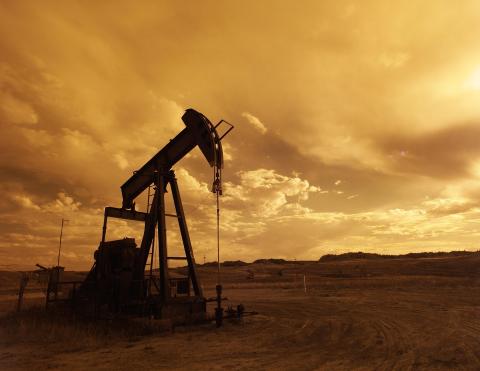
Oil and gas wells can produce fuels for many decades, but eventually, when at the end of their useful lives, they must be plugged to prevent greenhouse gas and air toxics emissions, avoid groundwater and surface water contamination, and enable new use of the surrounding area.
Considering the prospect of an energy transition away from fossil fuels, the nation’s bill for cleaning up legacy energy production assets is set to increase dramatically while revenues available to cover those costs may decrease. Policymakers are actively considering where to find the capital to complete this work. Estimates for plugging “orphaned” wells–inactive, unplugged wells with no responsible party—in the United States alone could run to $100 billion or more.
Until recently, the solution set seemed to be a combination of oil and gas industry money and public financing like the bipartisan Infrastructure Investment and Jobs Act (IIJA). While public financing has allowed for plugging existing orphan wells coming out of the pandemic, there is unlikely to be funding available for solvent operators who are legally responsible for properly plugging their wells upon retirement.
Over the past year or so, a new potential source of well closure funding has emerged in the form of voluntary carbon market finance – a subject the AAAS Center for Scientific Evidence in Public Issues (AAAS EPI Center) will explore in an Oct. 12 symposium. The AAAS EPI Center is an initiative designed to deliver clear, concise, and actionable scientific evidence to policymakers and other decision-makers. For three years, the center has convened meetings for industry leaders and decision makers in the oil and gas sector on the topic of orphan and abandoned wells and will expand on this work by focusing on the carbon credits market across the oil and gas sector. Presentations and discussions will include the relevant science, methodologies, and approaches related to quantifying, monitoring, and verifying reductions in greenhouse gas emissions from the oil and gas sector. Additional content will focus on the opportunities and risks related to carbon credits for properly decommissioning oil and gas wells.
There are 120,000 documented orphan wells across the United States, and at least 800,000 undocumented orphan wells, with some estimates in the several millions. While states have been plugging orphan wells for some time, the scale has never met the need. Even the major investment from the IIJA—$4.7 billion to plug documented orphan wells on federal, Tribal, state and private land—will not be enough to tackle the documented orphan well population, and will not address the much larger undocumented orphan well population.
Additionally, today’s one million active and idle wells are at risk of becoming orphaned as well. Of the 1 million “active” wells in the U.S. today, 80 percent of those wells are marginal producers—very near the end of their economic lives. Most of the production comes from only about 200,000 wells, and even these active wells may be a liability in the near term. Public financing is not enough to address the scale of this issue, and the voluntary carbon credit market is being examined as a scalable solution.
Several methodologies are under development or already being deployed to generate carbon credits for plugging not just orphan, but also idle, marginal, and even fully productive fields. These methodologies are based on two forms of emissions reduction—stopping methane leaks and preventing emissions from leaving fossil fuels in the ground.
On the one hand, there are good reasons to find new funding sources, such as carbon credits, for plugging old wells. The wells’ negative impacts are substantial, and the huge backlog inventory tells us we can use additional resources for this problem. On the other hand, there are significant questions as to the validity of these credits, whether they are “additional” (i.e., the reduction in emissions would not have occurred without the opportunity to sell the carbon credit), how accounting works, and whether conflicts of interest, moral hazard and perverse incentives have been properly addressed in the emerging methodologies—questions that are being asked about voluntary carbon credits and carbon markets across sectors.
Challenging questions remain. Will carbon credits from the oil and gas sector really reduce GHG emissions? Since operators across the country are required to plug their wells once they are no longer productive, how could the carbon market shift the timing and financial responsibility? What are the economic and social justifications for leaving resources in the ground that would otherwise be extracted? With heavy public investment and regulations about plugging wells, is there any part of the oil and gas sector that will truly meet the definition of additionality for voluntary carbon markets?
These and many more difficult questions should be considered when examining carbon finance as a source of funding for well closure. Policymakers must be aware of these potential pitfalls when considering partnerships with carbon finance programs. At the same time, the looming bill to meet climate goals and finance the energy transition—including retiring oil and gas infrastructure—is unlikely to be paid with public funds alone if industry does not pay for closure of their wells.
There is rapidly growing interest in applying carbon credit financing to the oil and gas sector. State assemblies are beginning to introduce legislation to authorize such approaches and state leaders are being approached with carbon finance proposals. Policymakers will need to carefully consider the most effective financial means for meeting climate goals and ensuring a fair and transparent energy transition.
Register for the EPI Center symposium at https://www.aaas.org/events/exploring-how-carbon-credits-are-evolving-oil-and-gas-sector.






